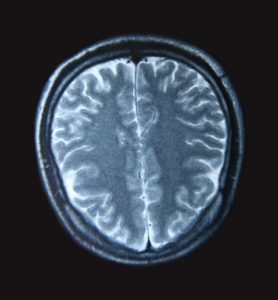Using an advanced imaging technique, researchers at Albert Einstein College of Medicine and Montefiore Health System were able to predict which patients who’d recently suffered concussions were likely to fully recover. The study also sheds light on the brain’s mechanisms for repairing or compensating for concussion injuries — information that could speed the development of therapies.
“Our study presents for the first time a precision approach to harness imaging at the time of concussion to forecast outcomes a year later,” said study leader Michael L. Lipton, M.D., Ph. D., professor of radiology, of psychiatry and behavioral sciences, and of neuroscience, as well as associate director of the Gruss Magnetic Resonance Research Center (MRRC) at Einstein and director of MRI services at Montefiore. “While we still lack effective treatments, we now have a better understanding of the neurological mechanisms that underlie a favorable response to concussion, which opens a new window on how to look at therapies and to measure their effectiveness.”
Each year, 2.5 million people in the United States sustain traumatic brain injuries (TBI), according to the Centers for Disease Control and Prevention. Concussions account for at least 75 percent of these injuries. Diagnosing a concussion is based on symptoms, behavioral and physical. Common symptoms include nausea and vomiting, headache, dizziness, trouble sleeping, seizures, decreased coordination, slurred speech, loss of consciousness, confusion and loss of sleep.
Unfortunately, while most think of a concussion as a short-lived injury, between 15-30% of people who have suffered from a concussion are left with symptoms that persist indefinitely, said Sara Strauss, M.D., the study’s lead author and resident in the department of radiology at Montefiore. She goes on to say, “Until now, we haven’t had a reliable way to differentiate in advance those who may be burdened long-term and those who would have a complete recovery.”
Using conventional imaging techniques such as computed tomography (CT) scans and magnetic resonance imaging (MRI) technology, concussions are undetectable. Both forms of imaging cannot detect the subtle damage to axons (the nerve fibers that constitute the brain’s white matter) that is associated with concussions. Lipton and his colleagues demonstrated that an advanced form of MRI called diffusion tensor imaging (DTI) can detect concussion-related axon damage. It does so by ‘seeing’ the water molecules along axons. This high-precision form of MRI now allows researchers the ability to measure the ability of water movement (Fractional anisotropy, or FA) throughout the brain. Finding a low FA brain region, for example, indicates structural damage that has impeded water movement in that area.
With the controlled testing of the DTI system, doctors and researchers can now diagnose and better treat patients that are presenting symptoms of a concussion, thereby offering more concrete answers and effective intervention options. Lipton cautions that more study and research needs to be done to validate this approach to predicting concussion outcomes.
With the DTI system coming into play, and the need for manufacturer’s to have precision lenses, Universe Kogaku designs and manufactures optical lenses for MRI/DTI systems, CT scanners, security, high tech and electronic applications. We stock 1000’s of standard lens assemblies and can custom design a solution for scanners, CCTV, CCD/CMOS, medical imaging, surveillance systems, machine vision and night vision systems.